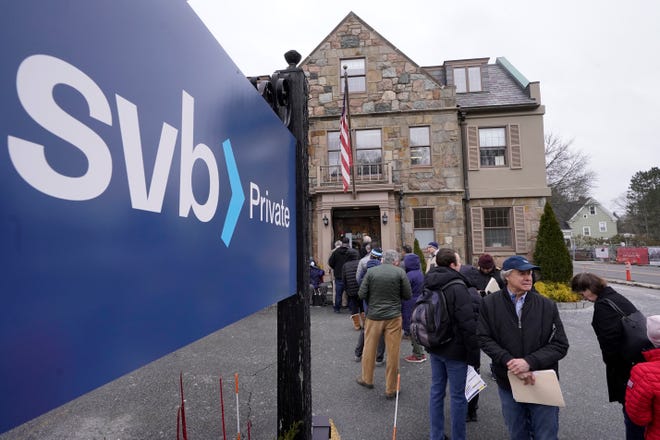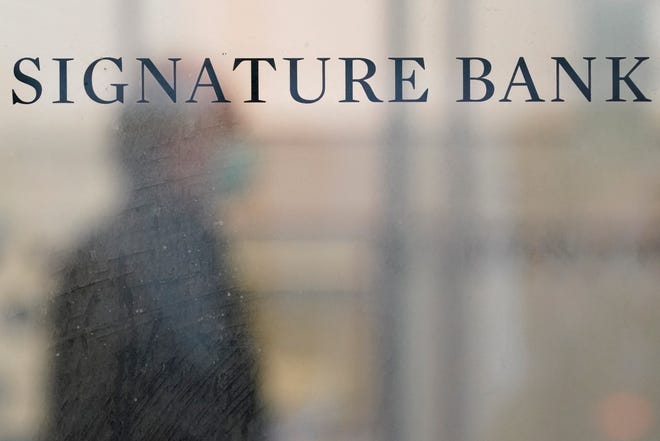
The role of the Federal Reserve is to create a safer and more stable monetary and financial system. Unfortunately, our central bank faces enormous challenges. We have not broken the back of inflation and the financial system is potentially precarious.

The collapse of Silicon Valley Bank and Signature Bank, as well as the last-minute private-sector rescue of First Republic, all have roots in the Fed’s move to sharply hike interest rates to curb surging inflation. This puts the Fed in a very difficult spot. Going forward, the Fed must determine what level of interest rate hikes can continue to bring down inflation without wrecking the banking system. They have to manage dual threats to the economy — inflation and banking stability. These goals look increasingly contradictory.
Belatedly, the Fed has moved to stem a broader financial crisis, launching a new emergency lending program to complement its existing “discount window” for emergency loans. The measures are meeting their objectives, with banks borrowing at the window hitting an all-time high of $153 billion last week.

Because many banks have suffered from a severe reduction in the value of their holdings of securities and mortgages, it is increasingly likely that depositors will move their funds to the big banks or to money-market funds.
According to the FDIC, U.S. banks have $620 billion in unrealized losses on their Treasuries. The reduction of interest rates or allowing banks to post their collateral at face value will help the financial system. However, both of these options will stimulate the economy and make inflation worse.
A brewing banking crisis:Forged by 2008 financial meltdown, Biden faces new test with failures at SVB, Signature Bank
What Is a Bank Failure?Definition, Causes, Results, and Examples
Doc’s Prescription:Two of the largest bank failures in U.S. history change the nation’s financial landscape
How did the crisis evolve?
The U.S. economy hit a wall when COVID spread to our country in March 2020. In the U.S., 20 million workers lost their jobs. Schools, restaurants, gymnasiums and many other businesses shut their doors. As a consequence, our economy fell into a deep recession.
Our government responded by providing trillions of dollars in stimulus funds. People began spending again. Unfortunately, there were supply chain disruptions that stoked inflation. Because President Biden and policymakers believed that inflation was temporary, the Federal Reserve delayed raising interest rates. Only when inflation hit a 40-year high of 9% did the Fed raise rates by a quarter percentage point in March 2022. Subsequently, the Fed has raised rates aggressively in order to curb inflation. The rate has skyrocketed from near zero to roughly 5% in the past year, the fastest increase on record. As a consequence, the bond market notched its steepest decline on record in 2022.
America’s small and midsize banks, those with less than $250 billion in assets, account for half of all banking assets and 80% of loans for commercial property. Because these banks are continuing to lose deposits, they will need to either raise capital or limit the loans they make. The decreased lending will slow the economy and lower inflation.
Forty-five percent of all deposits in the U.S. are uninsured. In America, the appeal of insuring all depositors is that there is no incentive to flee from smaller banks. However, offering universal deposit insurance without fixing their capital rules would encourage excessive risk-taking.

Last week, the Federal Reserve introduced an emergency program that allowed banks to finance their devalued bonds for their original value in cash.
The U.S. economy faces a new test: a banking crisis that could turn into a full-blown financial meltdown. Banks are pulling back on lending, making it difficult for businesses to borrow money and therefore, rekindling recession fears.
Monetary policymakers have no choice but to take into account the dangers of more bank failures to our economy. It would be a mistake to stop fighting inflation to preserve the banks, but inflation needs to be brought down in a controlled manner.
Sarasota resident Ernest “Doc” Werlin spent 35 years in fixed income as a trader and corporate bond salesman, including time as a partner at MorganStanley in charge of corporate bond trading. Send suggestions and comments to [email protected] or visit docwerlin.com.





